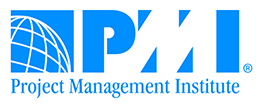PMBOK 4 to PMBOK 5 deeper drill (final)
| PMBOK 5 | PMBOK 4 |
| Work Performance Data. Raw observations and measurements including start and finish dates of schedule activities, percent complete. | Work Performance Measurements. Planned vs. actual performance, earned value measurements such as SV and CPI |
| Work Performance Information. Work performance data collected, correlated and contextualized. Includes deliverables status, implementation status for change requests. | Work Performance Information. Information and data on schedule status collected as part of direct and manage. Status of deliverables, schedule progress, costs incurred, forecasted ETC. |
| Work Performance Reports. The physical or electronic representation of work performance information. Status reports, memos, dashboards, updates, EVM reports | Performance reports. Current status, scheduled activities, forecasts, issues, analysis of past performance, work completed, forecasted project completion |
Other changes:
- Preventive action has been re-defined to sound less like risk mitigation and more like proactively ensuring the project is aligned with the project management plan.
- Verify Scope is known as Validate Scope. So QC is verification, Validate Scope, validation
- There are now four dependencies which can be used in combination: mandatory, external, internal, discretionary.
- Along with resource leveling, introduces a schedule concept called resource smoothing.
- Three-point estimates now have both triangular (average of three) and beta (PERT)
- Each process now has a key benefit in the introduction in addition to purpose.
- Management reserves are still not part of the baseline initially. But when these reserves are used, the amount used is added to the cost baseline. (Section 7.2.2.6)
- There is now an activity contingency reserve. (Figure 7-8)
- There is information on an organization’s risk appetite, risk threshold, and risk tolerance. (Risk introduction)
New graphics and tables
- Tables
- Project management plan vs. project documents. (Table 4-1)
- Project charter vs. project scope statement (Table 5-1)
- Listing of all Earned Value formulas (Table 7-1)
- Graphics
- Critical path method (Figure 6-18)
- Critical chain method (Figure 6-19)
- Resource leveling (Figure 6-20)
- Fundamental quality relationships (Figure 8-2)
(End of series. We’ll deal with this all over again in four years when PMI publishes the next PMBOK)


Hi,
I would know what is the difference between activity contingency reserve and contingency reserve only.
I didn’t find in PMBOK 5ª Ed
Thanks.
Good question. The first thing you should know is that PMI does not always define all the terms that it uses. I don’t know why that is. So let’s start with a term they do define, contingency reserve. (Reserves can apply to time or money. But since they specifically use activity contingency reserve in PMBOK in reference to money, let’s use that as an example). PMBOK defines contingency reserve as, “Budget within the cost baseline or performance measurement baseline that is allocated for identified risks that are accepted and for which contingent or mitigating responses are developed.”
So in a contingency reserve, money is set aside as a result of risk analysis, typically for a group of identified risks which may or may not happen. These risks are quantified, given a dollar amount and that money is set aside as a contingency reserve which becomes part of the cost baseline. PMI says that the contingency reserve may be a “percentage of the estimated cost, a fixed number, or may be developed by using quantitative analysis methods.”
So that’s contingency reserve. What about activity contingency reserve about which PMI says almost nothing. Well, ah-ha. Check out Section 7.2.2.6, Reserve Analysis. PMI says contingency reserves “can provide for a specific activity, for the whole project, or both.”
So I would say that the contingency reserve is for a group of identified risks, “known-unknowns.” and activity contingency reserve is for specific activities. The conclusion I draw from all this, in the absence of a specific statement from PMI, is that the overall contingency reserve could be the sum of all the activity contingency reserves. (Note that when you calculate contingency reserve, you don’t add up the possible dollar impacts of each risk but rather take a percentage of them based on probability. PMI does not detail how to calculate contingency reserve other than to say, as above, “developed by using quantitative analysis methods.”)